The Independent's journalism is supported by our readers. When you purchase through links on our site, we may earn commission.
‘Many were experimenting with hard drugs’: Inside the wild parties at 1980s Oxford University
Drunk university students are not a rare sight, but nothing quite matched the debonair debauchery of the University of Oxford in the 1980s. In his new book, Dafydd Jones reflects on his career beginnings, photographing England’s rich and soon-to-be famous
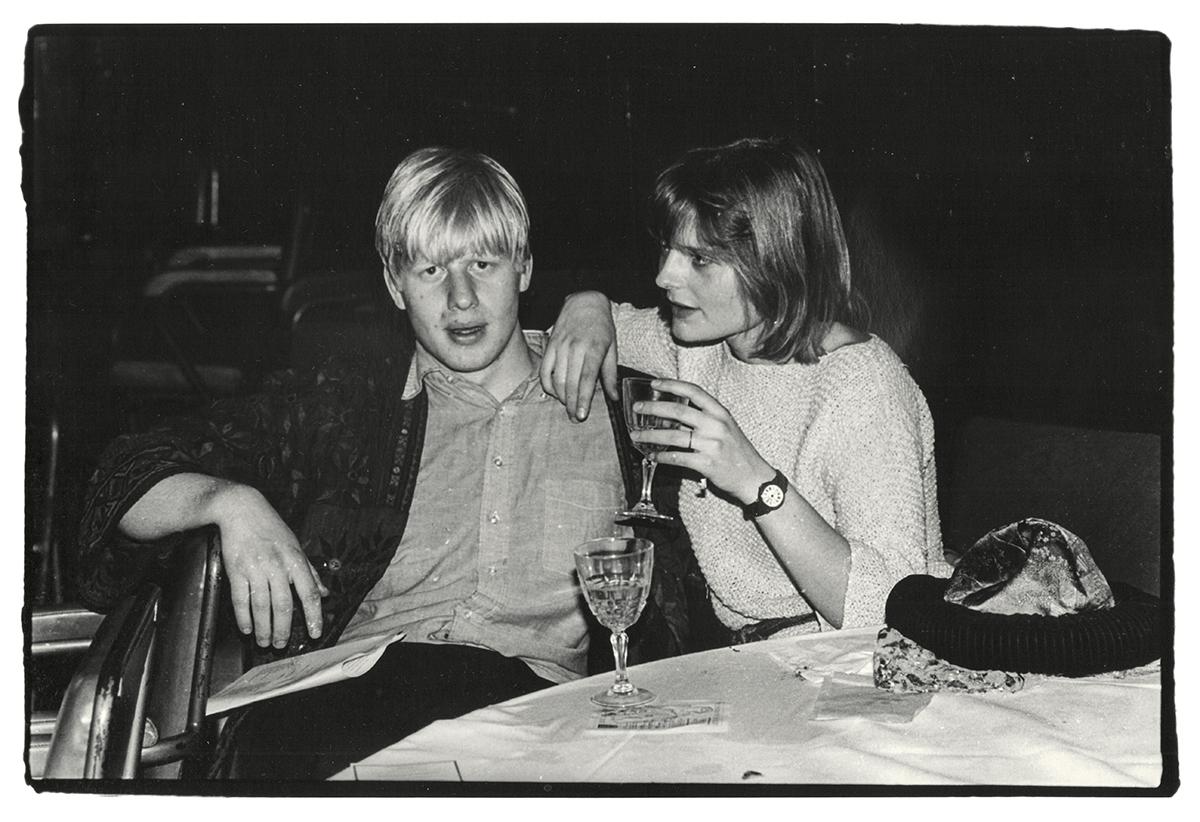
Your support helps us to tell the story
From reproductive rights to climate change to Big Tech, The Independent is on the ground when the story is developing. Whether it's investigating the financials of Elon Musk's pro-Trump PAC or producing our latest documentary, 'The A Word', which shines a light on the American women fighting for reproductive rights, we know how important it is to parse out the facts from the messaging.
At such a critical moment in US history, we need reporters on the ground. Your donation allows us to keep sending journalists to speak to both sides of the story.
The Independent is trusted by Americans across the entire political spectrum. And unlike many other quality news outlets, we choose not to lock Americans out of our reporting and analysis with paywalls. We believe quality journalism should be available to everyone, paid for by those who can afford it.
Your support makes all the difference.In The Last Hurrah, a new photo book, we see familiar faces from British high society poised on the brink of adulthood. Photographer Dafydd Jones has captured a 21-year-old Boris Johnson sitting next to his future first wife, looking quizzical and ill at ease. Hugh Grant, dashing in a skimpy leopard print onesie and flower crown, leans in to make eye contact with a young woman sitting next to him. Nigella Lawson is carried in a litter across a croquet lawn like Lewis Carroll’s Queen of Hearts, her thick hair flowing. David Cameron chats, relaxed, in a corner; William Hague makes a shouty champagne toast. All were photographed at the wild parties at the University of Oxford during the 1980s, an era which Jones recalls as a last hurrah for the English upper classes.
Although he was never a student at Oxford, Jones was often drawn into the university’s powerful economic and cultural orbit. After he left an Oxford comprehensive at 16, he got a job at the underground Bodleian library: “Dark and dusty it might have been, but there was a sense of romance and excitement as you made your way along the corridors,” he writes in the The Last Hurrah’s forward. A stint washing university windows followed, before he left Oxford for art school.
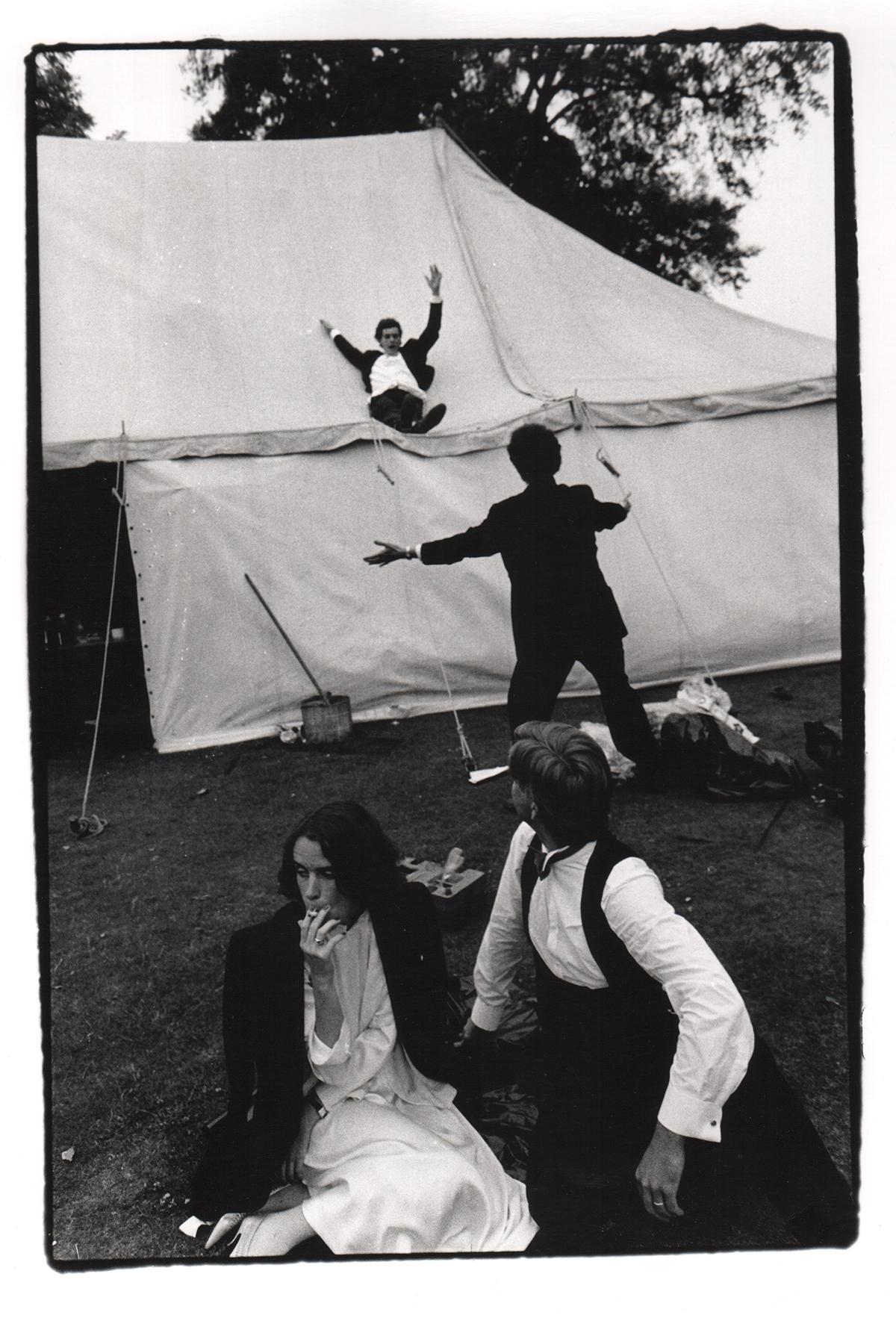
When he returned three years later he was soon back on the campus, this time working for the Oxford University student paper. He began photographing the social club events and parties: “Despite my first pictures not being particularly flattering to their subjects, invitations to photograph other aspects of Oxford followed. Fortunately, many of the subjects felt they were in on the joke and appreciated the pictures,” he says.

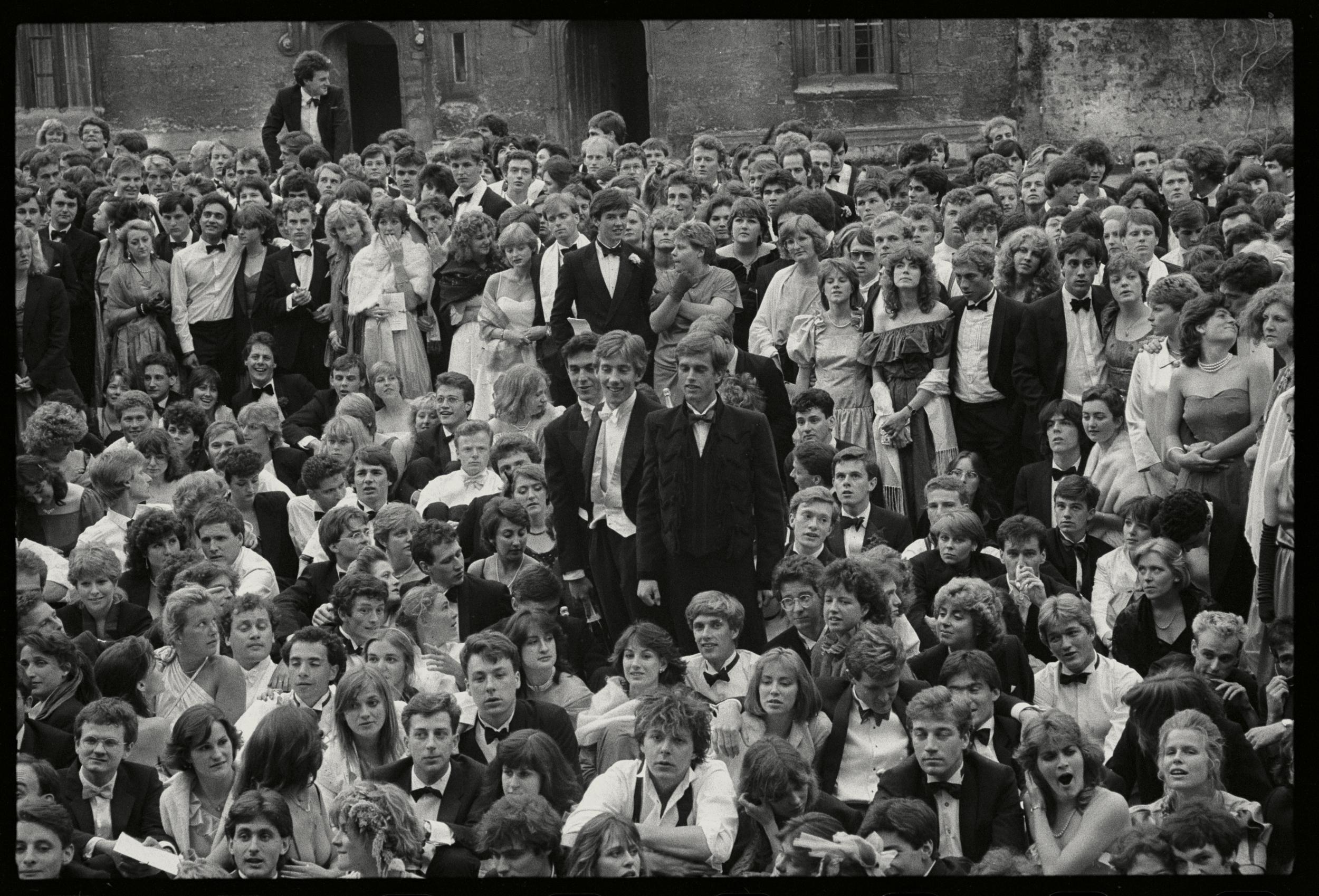
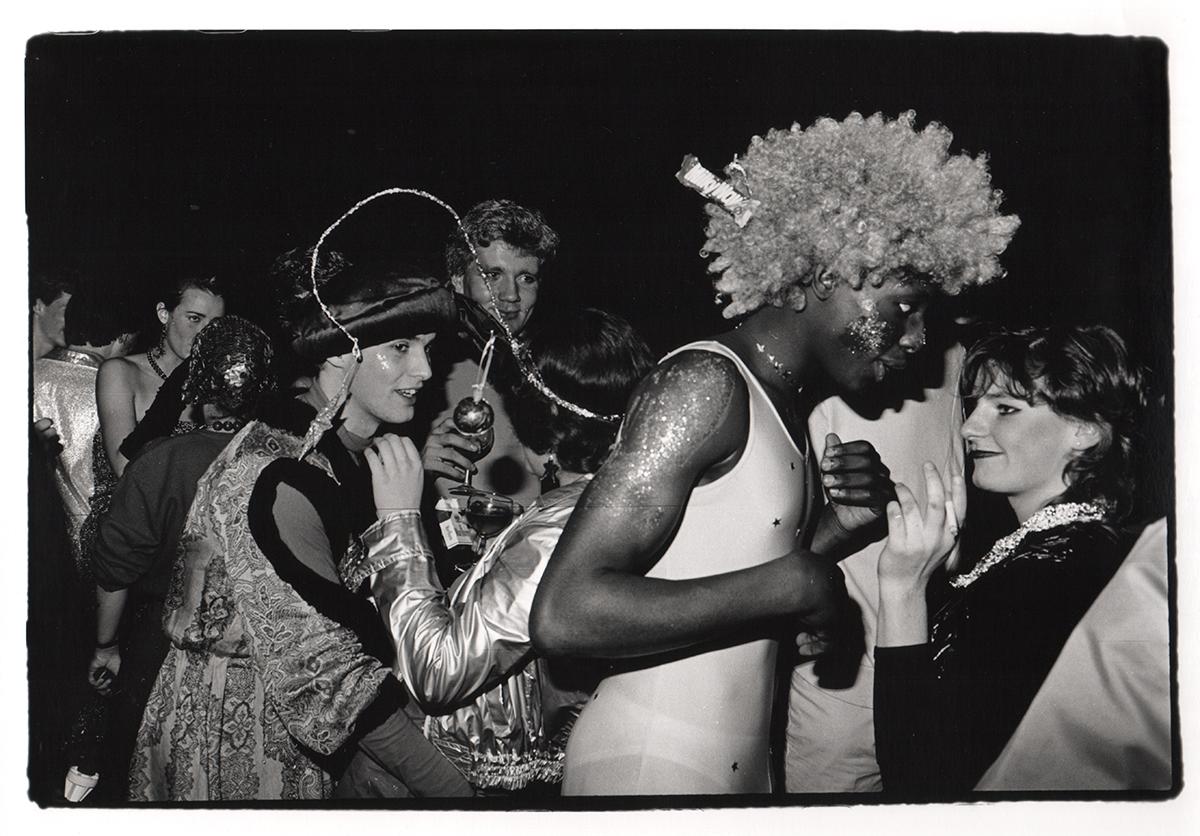
He had already noticed a change in the dress and attitudes of the students during his absence. The political zeitgeist was swinging to the right, and the 1981 popular TV adaptation of the Evelyn Waugh novel Brideshead Revisited had made the upper crust feel relevant and glamorous, nostalgic for the good old days of the Bright Young Things. “I’d already noticed that the students were no longer dressing like long-haired tramps,” says Jones. “Suddenly formal dress and black tie were becoming de rigueur … With hindsight, it was after the election of Margaret Thatcher, and the rich were benefiting from generous tax cuts and had started to feel confident again.”
This Waughian sense of debonair insouciance is evident in his photographs, with students in ballgowns and suits napping on a lawn after an all-nighter, or boozily toasting Thatcher and Reagan. Snobbery was rife, even between boys from public schools deemed more superior than others. “Many,” Jones notes, “were experimenting with hard drugs.”
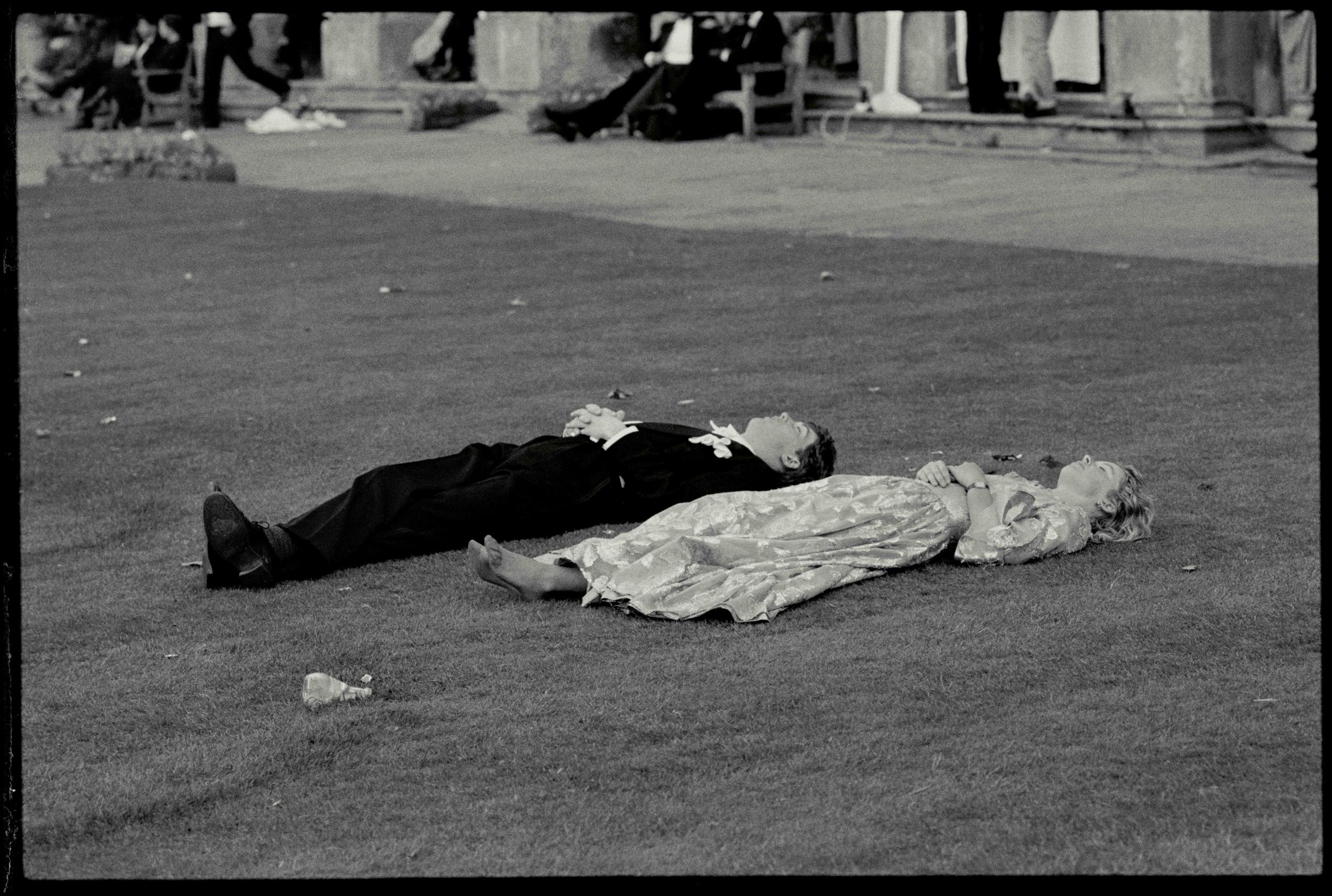

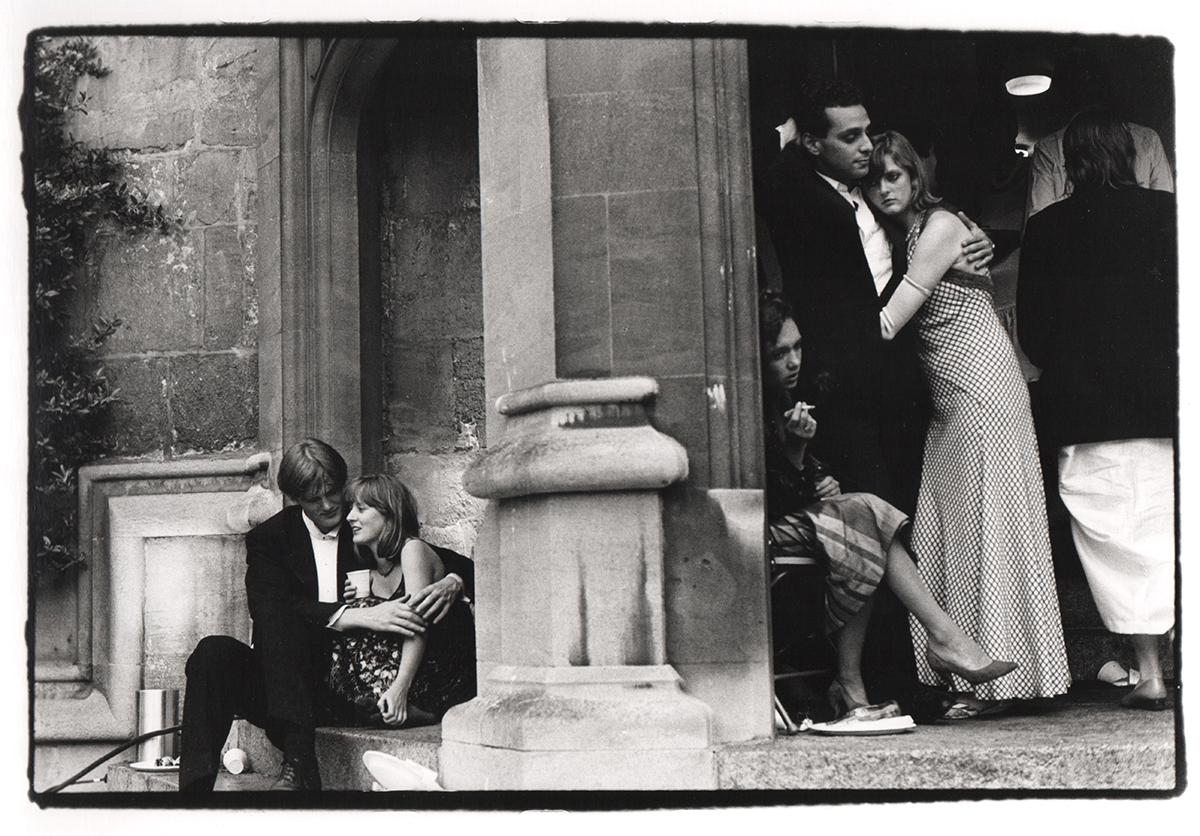
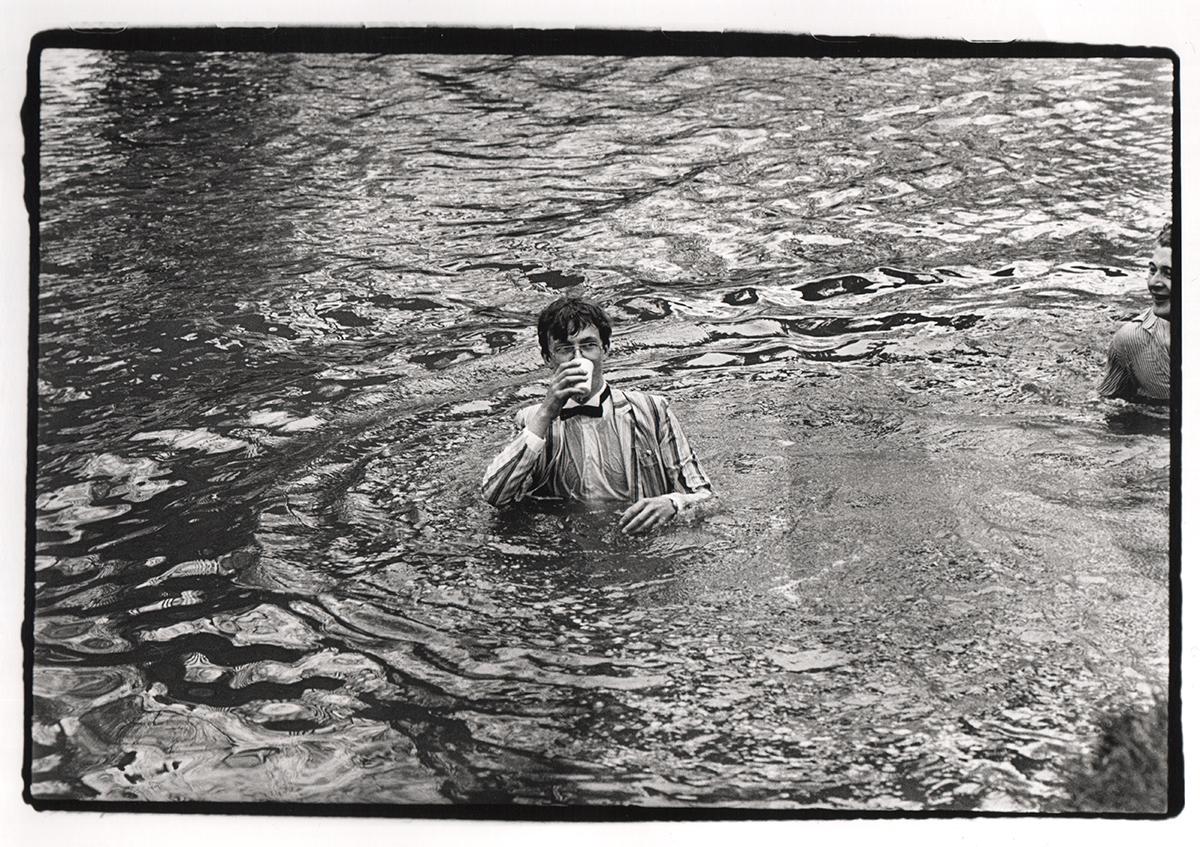
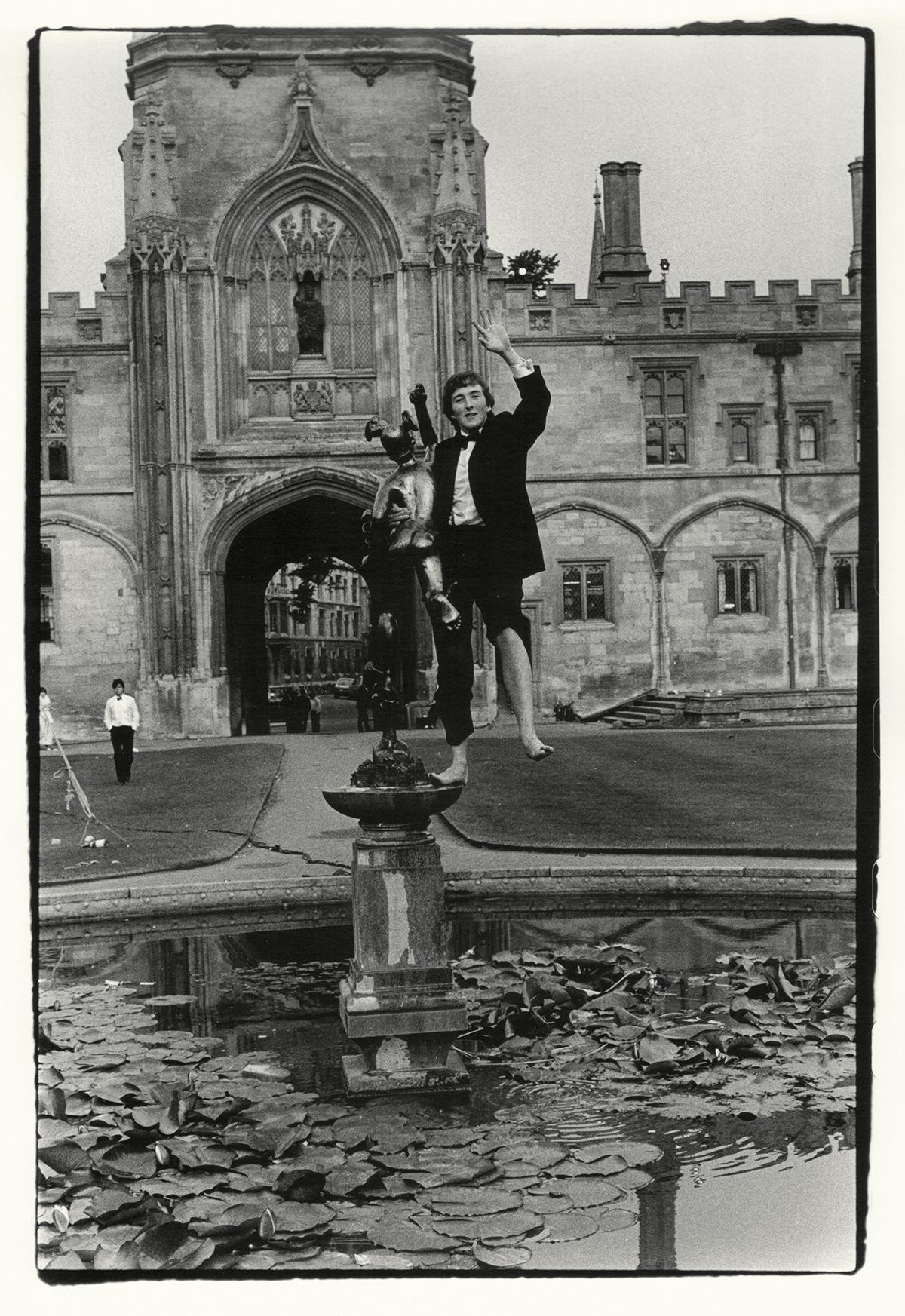
Yet, despite his subjects’ apparent lack of self-awareness, his photos capture a hesitant awkwardness amid the bravado, it is as if the tendrils of social awareness had already begun to infiltrate the party. Some students look dazed, as if they’re not quite sure what all this excess is for. Richard Ovenden OBE, currently Bodley’s librarian in the University of Oxford, points out in the book’s introduction that “the world captured in the pages of this book has been lost … the current mode of enjoyment has a different character. More joyful, but with less of a swaggering sense of entitlement.”
Jones ended up spending 12 years photographing Oxford, between 1976 and 1988. His work at the parties had opened up doors for him as a society photographer; he went on to work for, among others, Tatler, Vanity Fair and The Times. Looking back to his career beginnings and the whirlwind nights that nurtured it, his feelings are mixed: “Not everyone was having a good time at Oxford,” he says. “This is apparent in some of the pictures. Looking at them now they seem more romantic than I expected. They have been described as ‘celebratory and affectionate’ in their way which is something I would agree with.”
The Last Hurrah is out now, published by ACC Art Books
Join our commenting forum
Join thought-provoking conversations, follow other Independent readers and see their replies
Comments